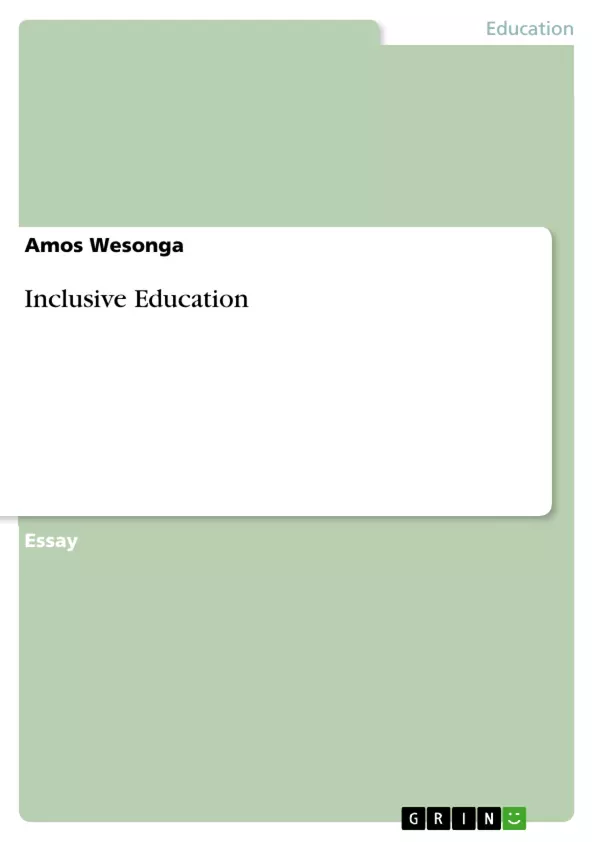Various impediments pose a challenge to the educational process for students, teachers and guardians alike. In Australia, the subject area of Physical Education with a focus on Physical Impairment is no exception. Therefore, this paper shall identify and explain the relevant student traits concerning the subject above. Also, it will consider the variance in a mainstream classroom, as well as techniques that uplift successful access to, and indulgence in the curriculum for all students in the class with keen view on Physical Education. Further, the essay will cite and describe teaching strategies that are inclusive and appropriate for the learner characteristics together with a selection of given Australian policies that influence the imparting of Physical Education for year seven to twelve secondary students.
Inhaltsverzeichnis (Table of Contents)
- Learner Characteristics
- Written language inadequacies
- Underdeveloped learners' social skills
- Low Concentration Spans and Hyperactivity
- Reading and Comprehension Challenges
- Behavioral Challenges
- Teaching Strategies
- Classroom Structures and Teaching Strategies
- Adaptive Physical Education Strategies
Zielsetzung und Themenschwerpunkte (Objectives and Key Themes)
This paper aims to identify and analyze the specific learning characteristics of physically impaired students in the context of Physical Education in Australia. It examines the challenges these students face within mainstream classrooms and explores effective teaching strategies that promote inclusivity and support their participation in the curriculum. Additionally, the essay highlights relevant Australian policies and regulations that influence the delivery of Physical Education for secondary students.
- Learning characteristics of physically impaired students in Physical Education
- Challenges faced by physically impaired students in mainstream classrooms
- Inclusive teaching strategies for physically impaired students in Physical Education
- Australian policies and regulations related to inclusive Physical Education
- The role of parents, guardians, and the community in supporting physically impaired students
Zusammenfassung der Kapitel (Chapter Summaries)
The first part of the paper delves into the distinct learning characteristics of physically impaired students, focusing on specific challenges they encounter in written language, social skills, concentration, reading comprehension, and behavior. These characteristics are analyzed in terms of their impact on classroom learning and potential implications for the students' emotional well-being. The paper explores how these characteristics influence their overall engagement and participation in Physical Education.
The second part of the paper examines practical teaching strategies for mainstream classrooms with physically impaired students. It highlights two key approaches: classroom structures and teaching strategies, and adaptive Physical Education strategies. The paper discusses how these strategies can effectively promote inclusivity and support the learning needs of physically impaired students in Physical Education.
Schlüsselwörter (Keywords)
The core focus of this paper is on inclusive education in Physical Education for physically impaired students in Australia. Key terms include: learner characteristics, physical impairment, teaching strategies, classroom structures, adaptive Physical Education, inclusivity, Australian policies, and the Melbourne Declaration on Educational Goals for Young Australians.
- Quote paper
- Dr. Amos Wesonga (Author), 2016, Inclusive Education, Munich, GRIN Verlag, https://www.grin.com/document/439524



